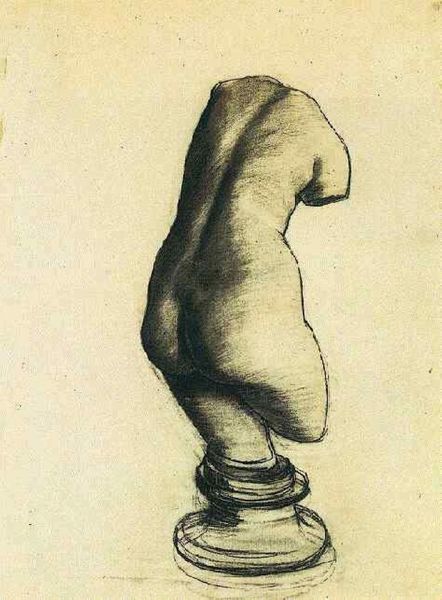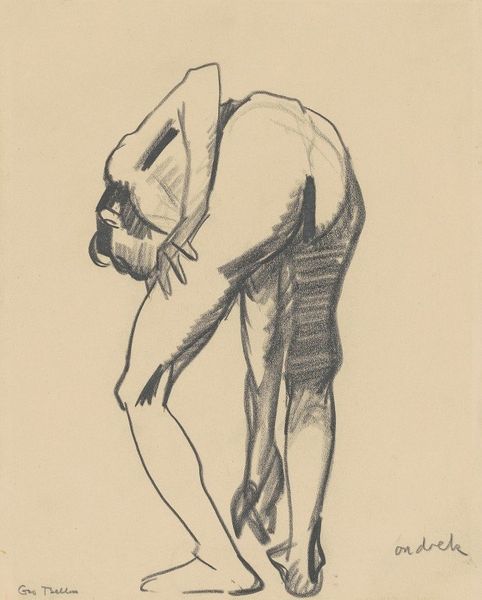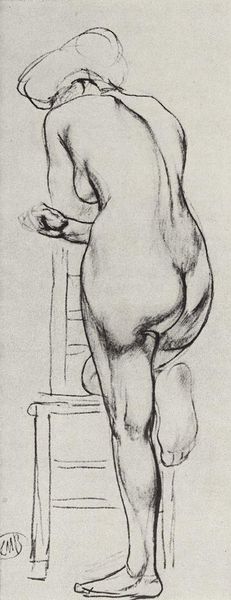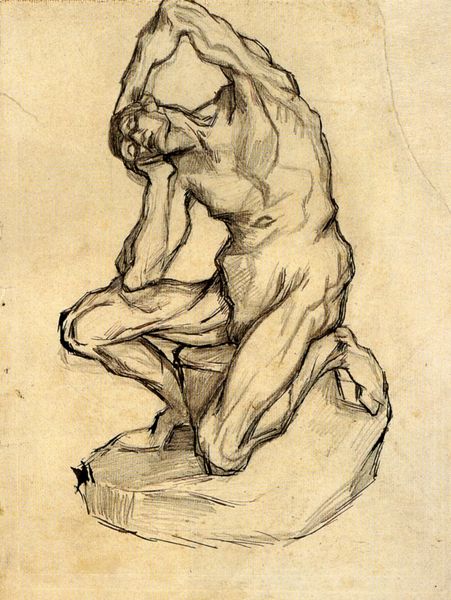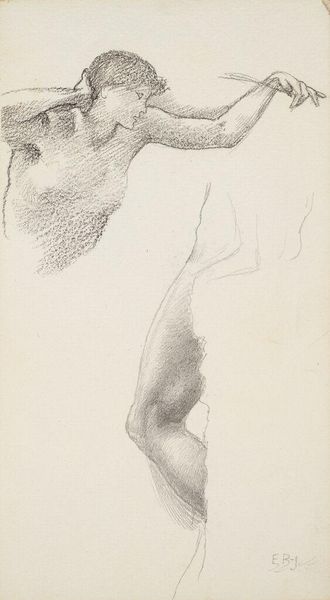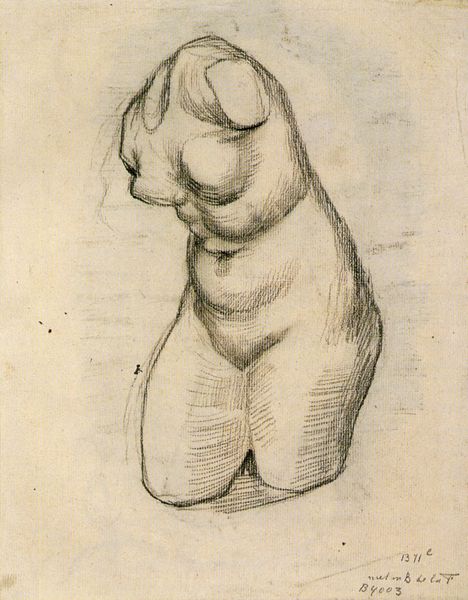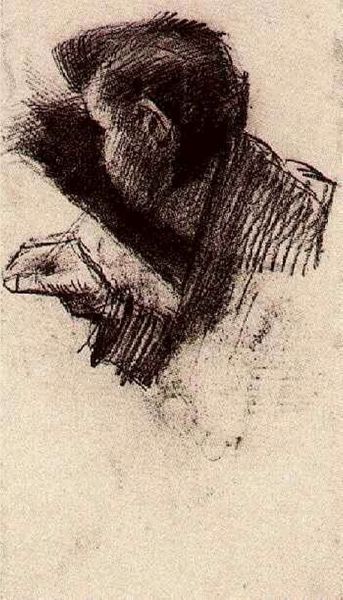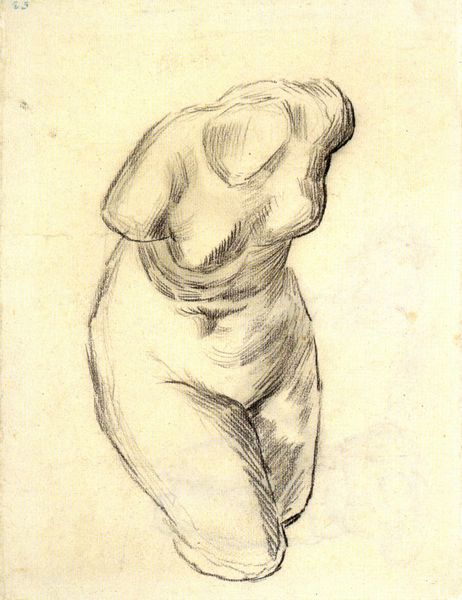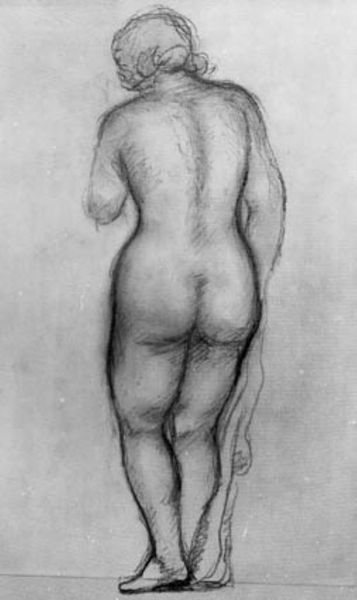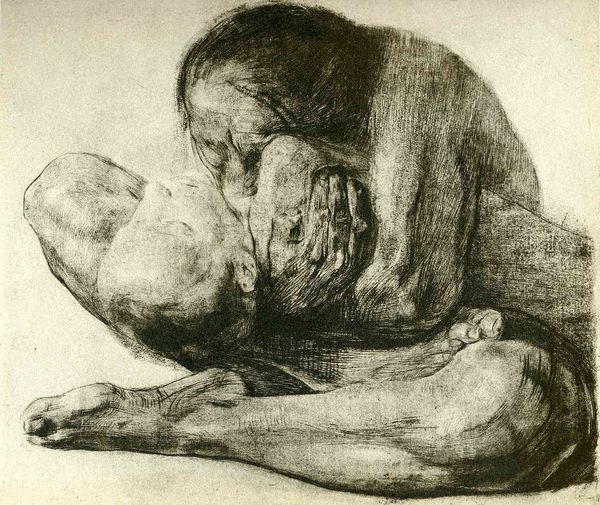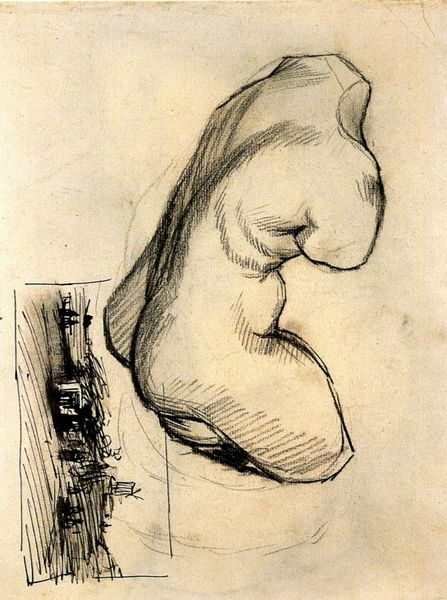
drawing, pencil
#
portrait
#
drawing
#
statue
#
landscape
#
figuration
#
pencil drawing
#
sketch
#
pencil
#
portrait drawing
#
realism
Copyright: Public domain
Curator: This is "Plaster Statuette," a pencil drawing by Vincent van Gogh from 1886. It’s currently held in the Van Gogh Museum in Amsterdam. Editor: My initial reaction? Melancholy. There’s something so weighted and stooped about the figure. Curator: It's important to consider that Van Gogh made this work while studying at the Academy in Antwerp. It reflects the institutional training focused on mastering the depiction of classical forms. Think of the broader art market and how academic skills dictated an artist's value at that time. Editor: And yet, despite its academic context, there's a deeply personal quality. The statue is rendered not as an idealized form, but with visible hatching and somewhat rough contours. Its hunched posture almost suggests introspection, doesn’t it? It’s as though it embodies human suffering or contemplation despite being a classical figure. Is there a suggestion of van Gogh wrestling with his place in a demanding and unforgiving academic art world? Curator: That's perceptive. Consider also how art academies like the one Van Gogh attended often used plaster casts to instill particular cultural and aesthetic values. These sculptures embodied notions of beauty tied to classical antiquity, promoting the dominance of European traditions. Editor: So, the figure embodies not just classical ideals but also the weight of tradition itself? It is burdened by artistic inheritance. Perhaps it shows his attempt to break free? The way Van Gogh captures light and shadow speaks volumes, adding a sense of impermanence. The symbolism is intriguing. He may also see this artform as the ‘oppressor’ rather than something ‘noble’ in the art canon. Curator: Precisely. We see that conflict rendered visible. This work becomes a statement on art education itself. Editor: Looking again, I’m struck by how Van Gogh imbued this standard subject matter with a deep well of human emotion and societal critique. It feels like an assertion of individuality and an exploration of self, a truly revealing piece. Curator: I agree. It’s an early example of the artist engaging with—and questioning—the artistic establishment of his time.
Comments
No comments
Be the first to comment and join the conversation on the ultimate creative platform.
